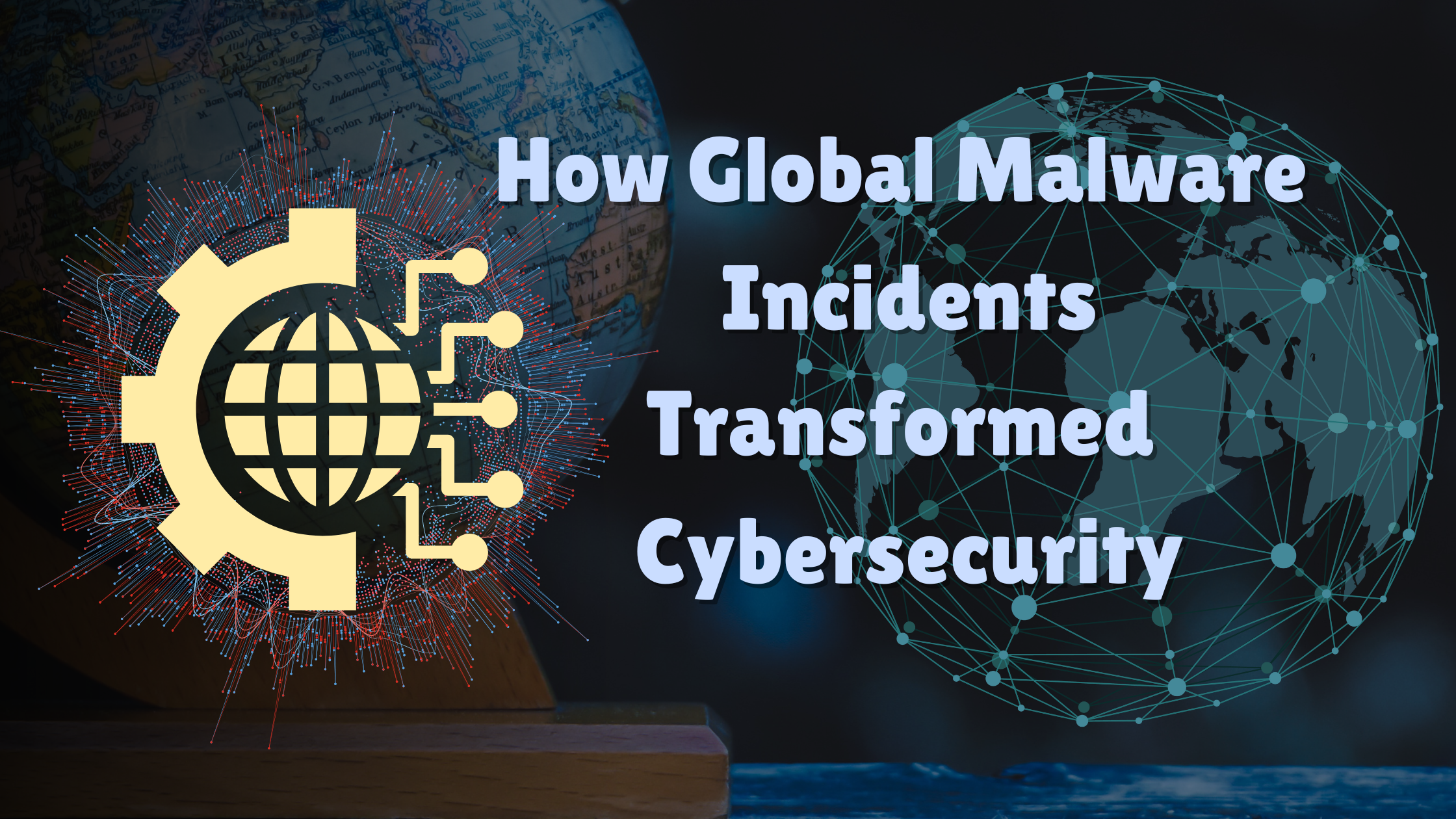How Global Malware Incidents Transformed Cybersecurity
The ever-evolving digital landscape has brought unparalleled convenience and connectivity, but it has also ushered in a darker reality: the rise of global malware incidents. Over the past two decades, cyberattacks have transitioned from isolated events to global phenomena, reshaping the cybersecurity landscape. These incidents have forced organizations, governments, and individuals to rethink their approach to digital safety. This blog delves into how global malware outbreaks have transformed the cybersecurity industry and what lessons we can draw from these transformative events.
The Rise of Global Malware Incidents
From the early days of disruptive worms like “ILOVEYOU” and “Mydoom” to the sophisticated ransomware campaigns of recent years, malware has evolved in scale, complexity, and impact. Notable global malware incidents include:
- WannaCry (2017): A ransomware attack that crippled over 200,000 systems in more than 150 countries, exploiting vulnerabilities in outdated Windows systems.
- NotPetya (2017): Initially posing as ransomware, this attack was later identified as a destructive wiper malware, targeting critical infrastructure and causing billions in damages globally.
- SolarWinds Supply Chain Attack (2020): While not strictly malware, this incident demonstrated how deeply embedded malicious code could infiltrate trusted systems, affecting thousands of organizations worldwide.
These incidents highlighted the vulnerabilities inherent in interconnected systems and the need for robust defense mechanisms.
Key Transformations in Cybersecurity
The impact of global malware incidents on cybersecurity has been profound. Here are some of the most significant transformations:
- Proactive Threat Hunting: Reactive cybersecurity measures are no longer sufficient. Organizations now prioritize threat hunting—actively searching for vulnerabilities and potential threats before they escalate.
- Adoption of Zero Trust Architectures: Global incidents have underscored the need for a “never trust, always verify” approach. Zero Trust models enforce strict access controls, ensuring that even authorized users and devices are continuously validated.
- Advanced Threat Intelligence: Sharing information about emerging threats has become crucial. Governments and private entities now collaborate to exchange real-time threat intelligence, enabling faster responses to global malware outbreaks.
- Focus on Endpoint Security: With the rise of remote work, endpoint devices have become prime targets for malware. This shift has driven innovation in endpoint detection and response (EDR) tools.
- Automation and AI Integration: Cybersecurity systems increasingly leverage artificial intelligence to detect anomalies, predict potential attacks, and automate responses. These tools enhance the speed and accuracy of threat mitigation efforts.
Lessons Learned from Global Incidents
- Patching is Non-Negotiable: Many malware outbreaks, such as WannaCry, exploited known vulnerabilities. Regular updates and patches are essential to prevent such exploits.
- Backup Strategies Matter: Ransomware attacks have emphasized the importance of robust backup strategies. Offline backups and regular recovery drills can mitigate the impact of data loss.
- Cyber Hygiene is Critical: Educating employees and users about phishing, safe browsing, and other best practices remains a cornerstone of effective cybersecurity.
- Incident Response is Paramount: Having a well-defined incident response plan can significantly reduce the downtime and damage caused by malware attacks.
The Road Ahead
As technology advances, so too will the methods employed by cybercriminals. The rise of quantum computing, for instance, poses both challenges and opportunities for cybersecurity. Organizations must remain agile, adopting a forward-looking approach that anticipates emerging threats.
Cybersecurity is no longer an IT department’s concern—it is a global priority. By learning from past incidents and embracing innovative solutions, we can build a safer digital future.
Final Thoughts
Global malware incidents serve as stark reminders of the digital age’s vulnerabilities. However, they have also been catalysts for change, driving the evolution of cybersecurity into a sophisticated and dynamic field. As we continue to face new threats, collaboration, innovation, and vigilance will be key to staying ahead in the ongoing battle against cybercrime.


